publications
publications by categories in reversed chronological order. generated by jekyll-scholar.
2025
-
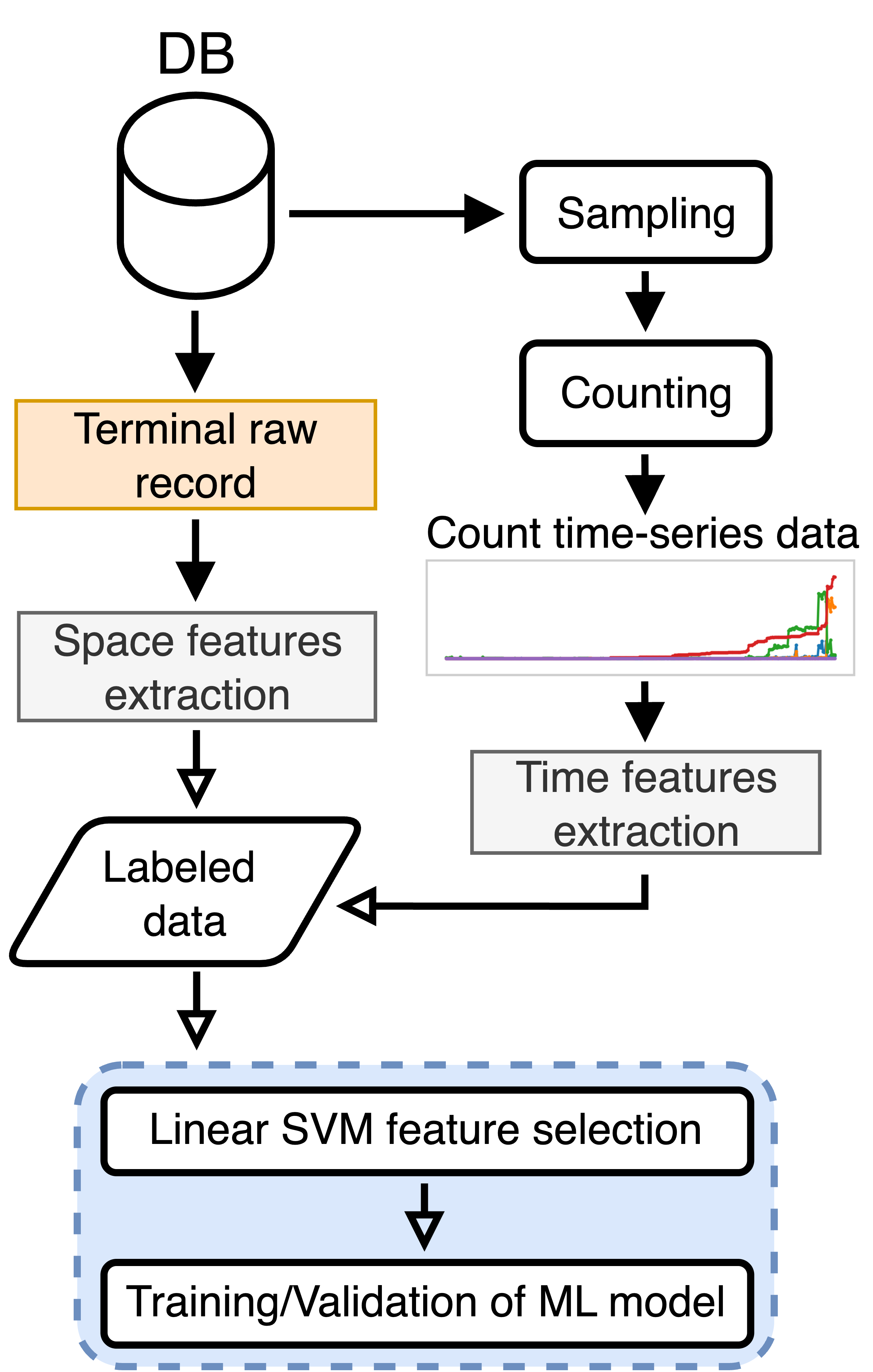 Machine Learning for Pattern Detection in Printhead Nozzle LoggingNikola Prianikov, Evelyne Janssen-van Dam, Marcin Pietrasik, and 1 more author2025
Machine Learning for Pattern Detection in Printhead Nozzle LoggingNikola Prianikov, Evelyne Janssen-van Dam, Marcin Pietrasik, and 1 more author2025Correct identification of failure mechanisms is essential for manufacturers to ensure the quality of their products. Certain failures of printheads developed by Canon Production Printing can be identified from the behavior of individual nozzles, the states of which are constantly recorded and can form distinct patterns in terms of the number of failed nozzles over time, and in space in the nozzle grid. In our work, we investigate the problem of printhead failure classification based on a multifaceted dataset of nozzle logging and propose a Machine Learning classification approach for this problem. We follow the feature-based framework of time-series classification, where a set of time-based and spatial features was selected with the guidance of domain experts. Several traditional ML classifiers were evaluated, and the One-vs-Rest Random Forest was found to have the best performance. The proposed model outperformed an in-house rule-based baseline in terms of a weighted F1 score for several failure mechanisms.
@misc{Prianikov2025machinelearningpatterndetection, title = {Machine Learning for Pattern Detection in Printhead Nozzle Logging}, author = {Prianikov, Nikola and Dam, Evelyne Janssen-van and Pietrasik, Marcin and Kouzinopoulos, Charalampos S.}, year = {2025}, eprint = {2509.25235}, archiveprefix = {arXiv}, primaryclass = {cs.LG}, url = {https://arxiv.org/abs/2509.25235}, doi = {10.48550/arXiv.2507.13970}, } -
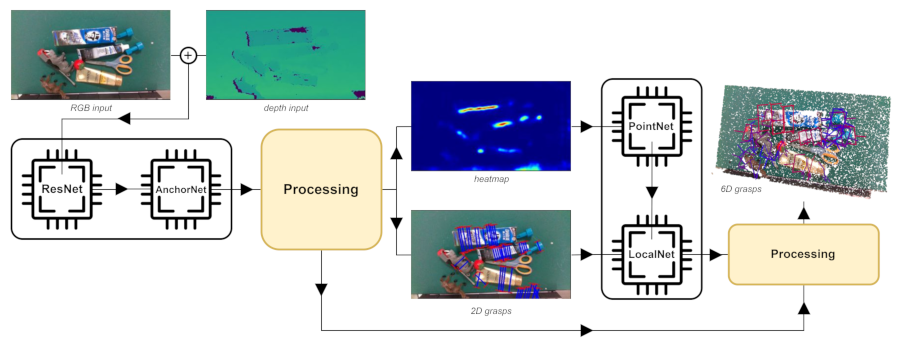 A segmented robot grasping perception neural network for edge AICasper Bröcheler, Thomas Vroom, Derrick Timmermans, and 4 more authorsIn IEEE International Conference on Systems, Man, and Cybernetics (SMC), 2025
A segmented robot grasping perception neural network for edge AICasper Bröcheler, Thomas Vroom, Derrick Timmermans, and 4 more authorsIn IEEE International Conference on Systems, Man, and Cybernetics (SMC), 2025Robotic grasping, the ability of robots to reliably secure and manipulate objects of varying shapes, sizes and orientations, is a complex task that requires precise perception and control. Deep neural networks have shown remarkable success in grasp synthesis by learning rich and abstract representations of objects. When deployed at the edge, these models can enable low-latency, low-power inference, making real-time grasping feasible in resource-constrained environments. This work implements Heatmap-Guided Grasp Detection, an end-to-end framework for the detection of 6-Dof grasp poses, on the GAP9 RISC-V System-on-Chip. The model is optimised using hardware-aware techniques, including input dimensionality reduction, model partitioning, and quantisation. Experimental evaluation on the GraspNet-1Billion benchmark validates the feasibility of fully on-chip inference, highlighting the potential of low-power MCUs for real-time, autonomous manipulation.
@inproceedings{Brocheler2025asegmentedrobotgrasping, title = {A segmented robot grasping perception neural network for edge AI}, booktitle = {IEEE International Conference on Systems, Man, and Cybernetics (SMC)}, author = {Br{\"o}cheler, Casper and Vroom, Thomas and Timmermans, Derrick and van den Akker, Alan and Tang, Guangzhi and Kouzinopoulos, Charalampos S. and M{\"o}ckel, Rico}, year = {2025}, eprint = {2507.13970}, archiveprefix = {arXiv}, primaryclass = {cs.RO}, url = {https://arxiv.org/abs/2507.13970}, doi = {10.48550/arXiv.2507.13970}, } -
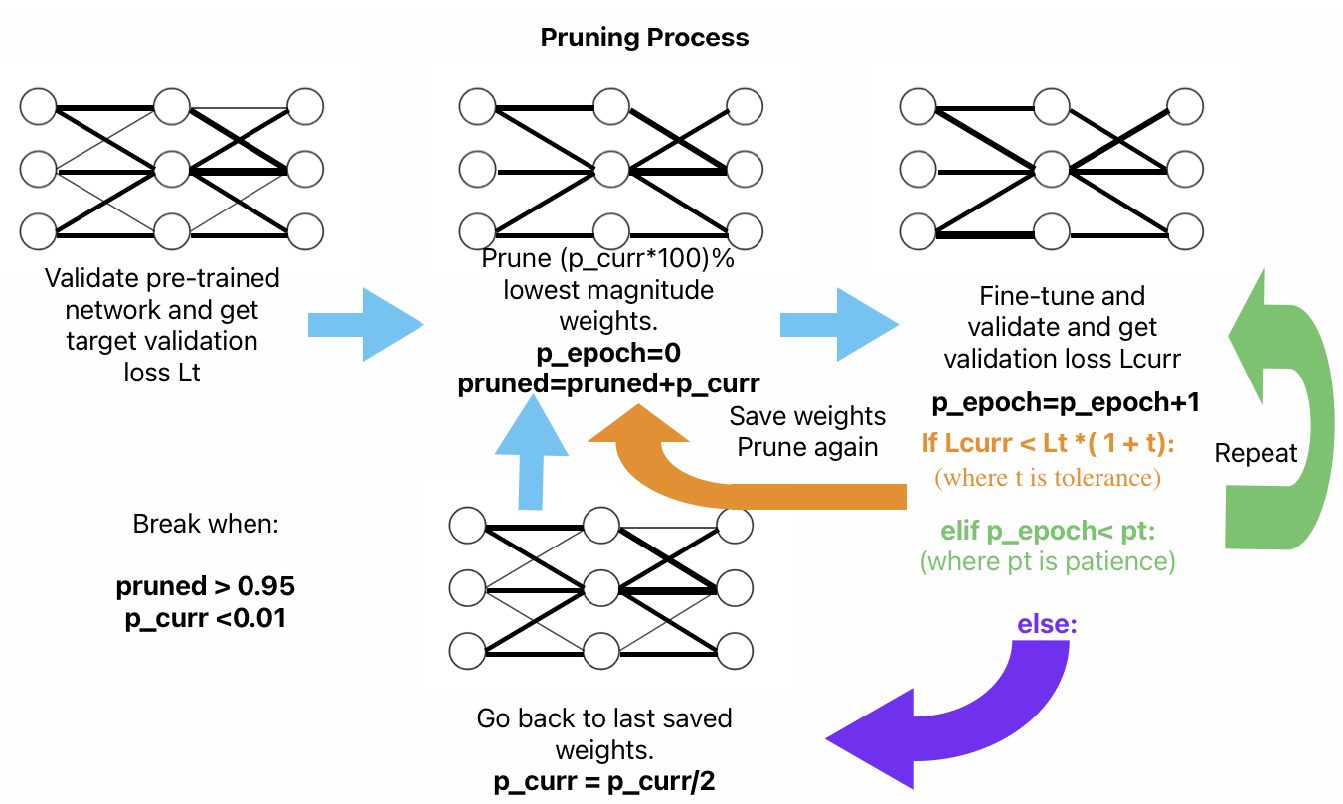 Adaptively Pruned Spiking Neural Networks for Energy-Efficient Intracortical Neural DecodingFrancesca Rivelli, Martin Popov, Charalampos S. Kouzinopoulos, and 1 more authorIn 47th Annual International Conference of the IEEE Engineering in Medicine and Biology Society (EMBC), 2025
Adaptively Pruned Spiking Neural Networks for Energy-Efficient Intracortical Neural DecodingFrancesca Rivelli, Martin Popov, Charalampos S. Kouzinopoulos, and 1 more authorIn 47th Annual International Conference of the IEEE Engineering in Medicine and Biology Society (EMBC), 2025Intracortical brain-machine interfaces demand low-latency, energy-efficient solutions for neural decoding. Spiking Neural Networks (SNNs) deployed on neuromorphic hardware have demonstrated remarkable efficiency in neural decoding by leveraging sparse binary activations and efficient spatiotemporal processing. However, reducing the computational cost of SNNs remains a critical challenge for developing ultra-efficient intracortical neural implants. In this work, we introduce a novel adaptive pruning algorithm specifically designed for SNNs with high activation sparsity, targeting intracortical neural decoding. Our method dynamically adjusts pruning decisions and employs a rollback mechanism to selectively eliminate redundant synaptic connections without compromising decoding accuracy. Experimental evaluation on the NeuroBench Non-Human Primate (NHP) Motor Prediction benchmark shows that our pruned network achieves performance comparable to dense networks, with a maximum tenfold improvement in efficiency. Moreover, hardware simulation on the neuromorphic processor reveals that the pruned network operates at sub-μW power levels, underscoring its potential for energy-constrained neural implants. These results underscore the promise of our approach for advancing energy-efficient intracortical brain-machine interfaces with low-overhead on-device intelligence.
@inproceedings{rivelli2025adaptivelyprunedspikingneural, title = {Adaptively Pruned Spiking Neural Networks for Energy-Efficient Intracortical Neural Decoding}, booktitle = {47th Annual International Conference of the IEEE Engineering in Medicine and Biology Society (EMBC)}, author = {Rivelli, Francesca and Popov, Martin and Kouzinopoulos, Charalampos S. and Tang, Guangzhi}, year = {2025}, eprint = {2504.11568}, archiveprefix = {arXiv}, primaryclass = {cs.NE}, url = {https://arxiv.org/abs/2504.11568}, doi = {10.48550/arXiv.2504.07638}, } -
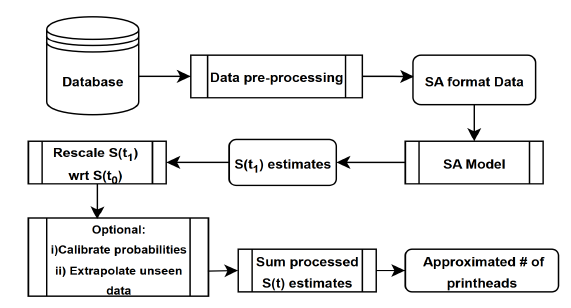 Predicting the Lifespan of Industrial Printheads with Survival AnalysisDan Parii, Evelyne Janssen, Guangzhi Tang, and 2 more authorsIn 8th IEEE International Conference on Industrial Cyber-Physical Systems (ICPS), 2025
Predicting the Lifespan of Industrial Printheads with Survival AnalysisDan Parii, Evelyne Janssen, Guangzhi Tang, and 2 more authorsIn 8th IEEE International Conference on Industrial Cyber-Physical Systems (ICPS), 2025Accurately predicting the lifespan of critical device components is essential for maintenance planning and production optimization, making it a topic of significant interest in both academia and industry. In this work, we investigate the use of survival analysis for predicting the lifespan of production printheads developed by Canon Production Printing. Specifically, we focus on the application of five techniques to estimate survival probabilities and failure rates: the Kaplan-Meier estimator, Cox proportional hazard model, Weibull accelerated failure time model, random survival forest, and gradient boosting. The resulting estimates are further refined using isotonic regression and subsequently aggregated to determine the expected number of failures. The predictions are then validated against real-world ground truth data across multiple time windows to assess model reliability. Our quantitative evaluation using three performance metrics demonstrates that survival analysis outperforms industry-standard baseline methods for printhead lifespan prediction.
@inproceedings{parii2025predicting, title = {Predicting the Lifespan of Industrial Printheads with Survival Analysis}, booktitle = {8th IEEE International Conference on Industrial Cyber-Physical Systems (ICPS)}, author = {Parii, Dan and Janssen, Evelyne and Tang, Guangzhi and Kouzinopoulos, Charalampos S. and Pietrasik, Marcin}, year = {2025}, eprint = {2504.07638}, archiveprefix = {arXiv}, primaryclass = {cs.LG}, url = {https://arxiv.org/abs/2504.07638}, doi = {10.48550/arXiv.2504.07638}, }
2024
-
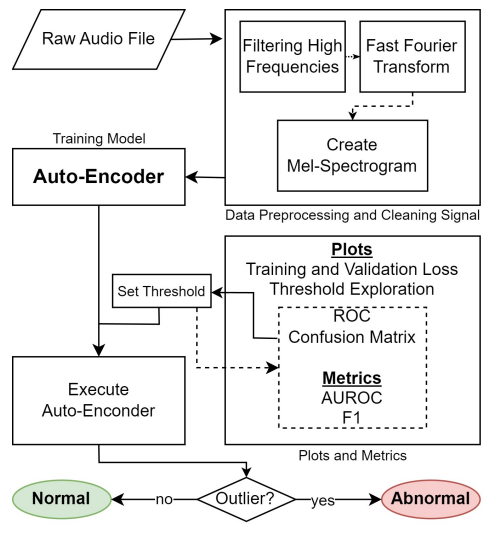 An Embedded System for the Predictive Maintenance of Aerobic Digesters with Liquid OutputsStylianos Eleftheriadis, Georgios Margaritis, Charalampos S. Kouzinopoulos, and 2 more authorsIn 2024 13th International Conference on Modern Circuits and Systems Technologies (MOCAST), 2024
An Embedded System for the Predictive Maintenance of Aerobic Digesters with Liquid OutputsStylianos Eleftheriadis, Georgios Margaritis, Charalampos S. Kouzinopoulos, and 2 more authorsIn 2024 13th International Conference on Modern Circuits and Systems Technologies (MOCAST), 2024This paper introduces a novel embedded edge computing system for the Internet of Things, specifically designed for predictive maintenance of grinding motors in Aerobic Digesters with Liquid Outputs. Low-power sensors and Machine Learning algorithms are integrated, using vibration and sound data for real-time monitoring and proactive anomaly detection. Through the evaluation of the proposed system in real-life environments, an improved performance compared to state-of-the-art models is demonstrated, emphasizing its potential for enhancing the reliability and efficiency of resource utilization in food waste management practices.
@inproceedings{Eleftheriadis2024AnEmbedded, author = {Eleftheriadis, Stylianos and Margaritis, Georgios and Kouzinopoulos, Charalampos S. and Ioannidis, Dimosthenis and Tzovaras, Dimitrios}, booktitle = {2024 13th International Conference on Modern Circuits and Systems Technologies (MOCAST)}, title = {An Embedded System for the Predictive Maintenance of Aerobic Digesters with Liquid Outputs}, year = {2024}, volume = {}, number = {}, pages = {01-04}, keywords = {Liquids;Embedded systems;Computational modeling;Motors;Sensor systems;Real-time systems;Sensors;embedded architecture;smart compost bin;food waste management;embedded machine learning;anomaly detection}, doi = {10.1109/MOCAST61810.2024.10615448}, } -
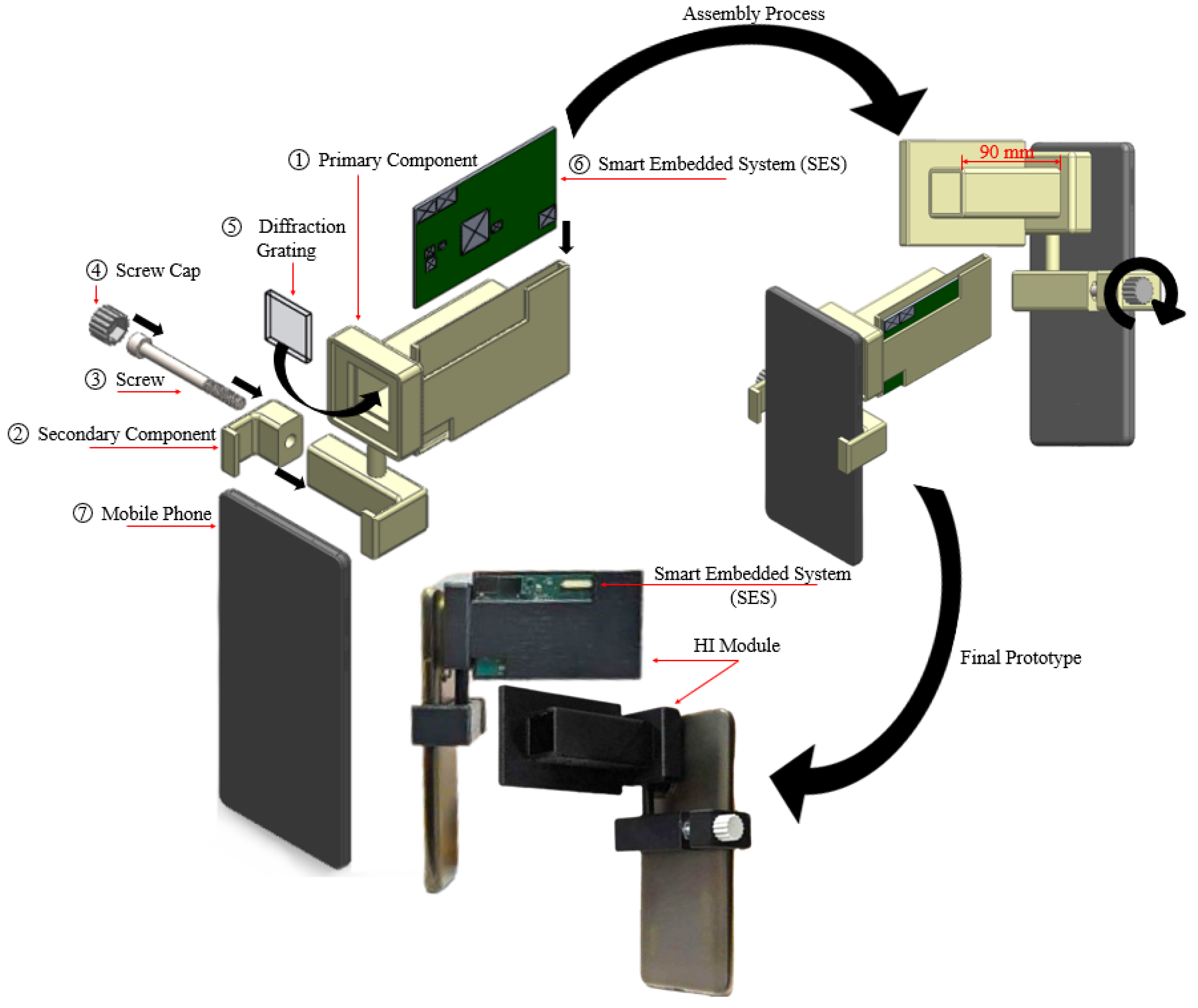 A Citizen Science Tool Based on an Energy Autonomous Embedded System with Environmental Sensors and Hyperspectral ImagingCharalampos S. Kouzinopoulos, Eleftheria Maria Pechlivani, Nikolaos Giakoumoglou, and 5 more authorsJournal of Low Power Electronics and Applications, 2024
A Citizen Science Tool Based on an Energy Autonomous Embedded System with Environmental Sensors and Hyperspectral ImagingCharalampos S. Kouzinopoulos, Eleftheria Maria Pechlivani, Nikolaos Giakoumoglou, and 5 more authorsJournal of Low Power Electronics and Applications, 2024Citizen science reinforces the development of emergent tools for the surveillance, monitoring, and early detection of biological invasions, enhancing biosecurity resilience. The contribution of farmers and farm citizens is vital, as volunteers can strengthen the effectiveness and efficiency of environmental observations, improve surveillance efforts, and aid in delimiting areas affected by plant-spread diseases and pests. This study presents a robust, user-friendly, and cost-effective smart module for citizen science that incorporates a cutting-edge developed hyperspectral imaging (HI) module, integrated in a single, energy-independent device and paired with a smartphone. The proposed module can empower farmers, farming communities, and citizens to easily capture and transmit data on crop conditions, plant disease symptoms (biotic and abiotic), and pest attacks. The developed HI-based module is interconnected with a smart embedded system (SES), which allows for the capture of hyperspectral images. Simultaneously, it enables multimodal analysis using the integrated environmental sensors on the module. These data are processed at the edge using lightweight Deep Learning algorithms for the detection and identification of Tuta absoluta (Meyrick), the most important invaded alien and devastating pest of tomato. The innovative Artificial Intelligence (AI)-based module offers open interfaces to passive surveillance platforms, Decision Support Systems (DSSs), and early warning surveillance systems, establishing a seamless environment where innovation and utility converge to enhance crop health and productivity and biodiversity protection.
@article{Kouzinopoulos2024ACitizen, author = {Kouzinopoulos, Charalampos S. and Pechlivani, Eleftheria Maria and Giakoumoglou, Nikolaos and Papaioannou, Alexios and Pemas, Sotirios and Christakakis, Panagiotis and Ioannidis, Dimosthenis and Tzovaras, Dimitrios}, title = {A Citizen Science Tool Based on an Energy Autonomous Embedded System with Environmental Sensors and Hyperspectral Imaging}, journal = {Journal of Low Power Electronics and Applications}, volume = {14}, year = {2024}, number = {2}, article-number = {19}, url = {https://www.mdpi.com/2079-9268/14/2/19}, issn = {2079-9268}, doi = {10.3390/jlpea14020019}, } -
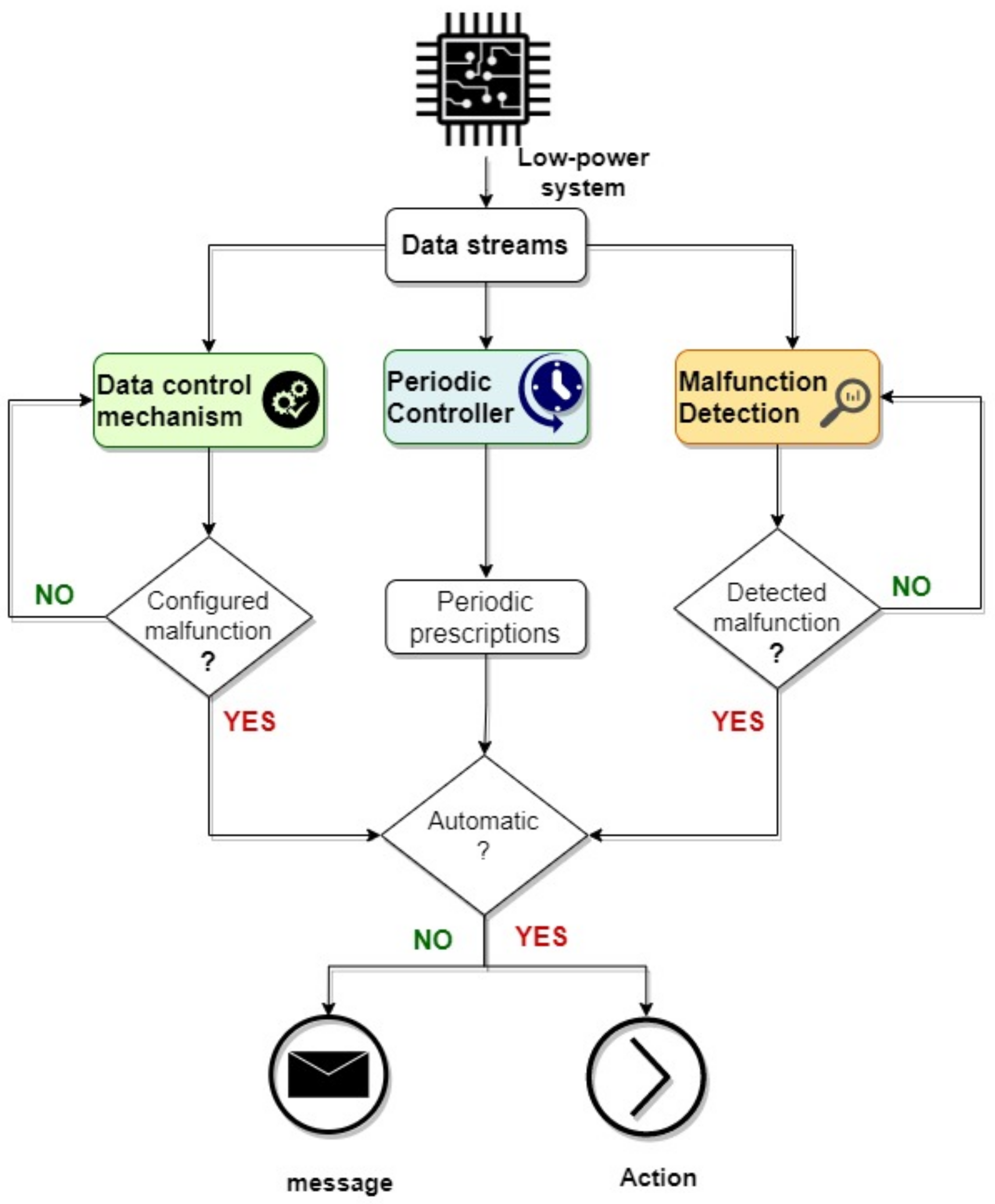 LP-OPTIMA: A Framework for Prescriptive Maintenance and Optimization of IoT Resources for Low-Power Embedded SystemsAlexios Papaioannou, Asimina Dimara, Charalampos S. Kouzinopoulos, and 4 more authorsSensors, 2024
LP-OPTIMA: A Framework for Prescriptive Maintenance and Optimization of IoT Resources for Low-Power Embedded SystemsAlexios Papaioannou, Asimina Dimara, Charalampos S. Kouzinopoulos, and 4 more authorsSensors, 2024Low-power embedded systems have been widely used in a variety of applications, allowing devices to efficiently collect and exchange data while minimizing energy consumption. However, the lack of extensive maintenance procedures designed specifically for low-power systems, coupled with constraints on anticipating faults and monitoring capacities, presents notable difficulties and intricacies in identifying failures and customized reaction mechanisms. The proposed approach seeks to address the gaps in current resource management frameworks and maintenance protocols for low-power embedded systems. Furthermore, this paper offers a trilateral framework that provides periodic prescriptions to stakeholders, a periodic control mechanism for automated actions and messages to prevent breakdowns, and a backup AI malfunction detection module to prevent the system from accessing any stress points. To evaluate the AI malfunction detection module approach, three novel autonomous embedded systems based on different ARM Cortex cores have been specifically designed and developed. Real-life results obtained from the testing of the proposed AI malfunction detection module in the developed embedded systems demonstrated outstanding performance, with metrics consistently exceeding 98%. This affirms the efficacy and reliability of the developed approach in enhancing the fault tolerance and maintenance capabilities of low-power embedded systems.
@article{Papaioannou2024LP-OPTIMA, author = {Papaioannou, Alexios and Dimara, Asimina and Kouzinopoulos, Charalampos S. and Krinidis, Stelios and Anagnostopoulos, Christos-Nikolaos and Ioannidis, Dimosthenis and Tzovaras, Dimitrios}, title = {LP-OPTIMA: A Framework for Prescriptive Maintenance and Optimization of IoT Resources for Low-Power Embedded Systems}, journal = {Sensors}, volume = {24}, year = {2024}, number = {7}, article-number = {2125}, url = {https://www.mdpi.com/1424-8220/24/7/2125}, pubmedid = {38610337}, issn = {1424-8220}, doi = {10.3390/s24072125}, }
2023
-
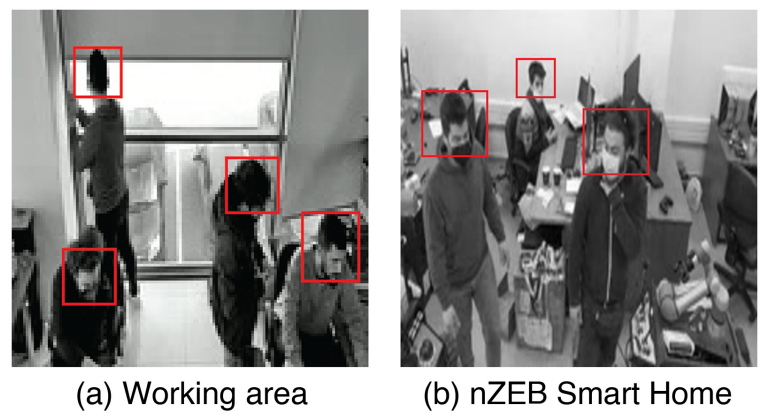 An Ultra-low-power Embedded AI Fire Detection and Crowd Counting System for Indoor AreasAlexios Papaioannou, Charalampos S. Kouzinopoulos, Dimosthenis Ioannidis, and 1 more authorACM Transactions on Embedded Computing Systems, 2023
An Ultra-low-power Embedded AI Fire Detection and Crowd Counting System for Indoor AreasAlexios Papaioannou, Charalampos S. Kouzinopoulos, Dimosthenis Ioannidis, and 1 more authorACM Transactions on Embedded Computing Systems, 2023Fire incidents in residential and industrial areas are often the cause of human casualties and property damage. Although there are existing systems that detect fire and monitor the presence of people in indoor areas, research on their implementation in embedded platforms is limited. This article introduces an ultra-low-power embedded system for fire detection and crowd counting using efficient deep learning methods. For the prediction of fire occurrences, environmental and gas sensor along with multilayer perceptron nodes are used. For crowd counting, a custom lightweight version of YOLOv5 is introduced, using an architecture based on ShuffleNetV2, resulting in a model with low memory requirements, high accuracy predictions, and fast inference on an embedded platform. The accuracy, power consumption, and memory requirements of the proposed system are evaluated using public datasets and datasets acquired by the environmental and image sensors, and its performance is compared to that of existing approaches.
@article{Papaioannou2023AnUltra, author = {Papaioannou, Alexios and Kouzinopoulos, Charalampos S. and Ioannidis, Dimosthenis and Tzovaras, Dimitrios}, title = {An Ultra-low-power Embedded AI Fire Detection and Crowd Counting System for Indoor Areas}, year = {2023}, issue_date = {July 2023}, publisher = {Association for Computing Machinery}, address = {New York, NY, USA}, volume = {22}, number = {4}, issn = {1539-9087}, url = {https://doi.org/10.1145/3582433}, doi = {10.1145/3582433}, journal = {ACM Transactions on Embedded Computing Systems}, articleno = {61}, numpages = {20}, keywords = {Fire detection, crowd counting, embedded system, ultra-low-power system, machine learning for low-power systems, computer vision, Multilayer perceptron (MLP), YOLOv5, LW-YOLOv5}, } -
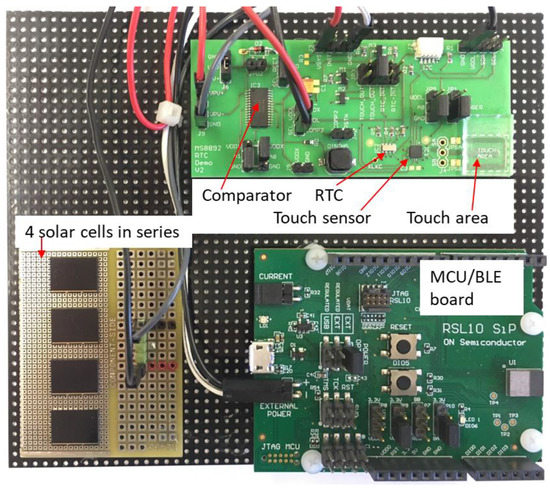 Energy Autonomous Wireless Sensing Node Working at 5 Lux from a 4 cm2 Solar CellMarcel Louis Meli, Sebastien Favre, Benjamin Maij, and 5 more authorsJournal of Low Power Electronics and Applications, 2023
Energy Autonomous Wireless Sensing Node Working at 5 Lux from a 4 cm2 Solar CellMarcel Louis Meli, Sebastien Favre, Benjamin Maij, and 5 more authorsJournal of Low Power Electronics and Applications, 2023Harvesting energy for IoT nodes in places that are permanently poorly lit is important, as many such places exist in buildings and other locations. The need for energy-autonomous devices working in such environments has so far received little attention. This work reports the design and test results of an energy-autonomous sensor node powered solely by solar cells. The system can cold-start and run in low light conditions (in this case 20 lux and below, using white LEDs as light sources). Four solar cells of 1 cm2 each are used, yielding a total active surface of 4 cm2. The system includes a capacitive sensor that acts as a touch detector, a crystal-accurate real-time clock (RTC), and a Cortex-M3-compatible microcontroller integrating a Bluetooth Low Energy radio (BLE) and the necessary stack for communication. A capacitor of 100 μF is used as energy storage. A low-power comparator monitors the level of the energy storage and powers up the system. The combination of the RTC and touch sensor enables the MCU load to be powered up periodically or using an asynchronous user touch activity. First tests have shown that the system can perform the basic work of cold-starting, sensing, and transmitting frames at +0 dBm, at illuminances as low as 5 lux. Harvesting starts earlier, meaning that the potential for full function below 5 lux is present. The system has also been tested with other light sources. The comparator is a test chip developed for energy harvesting. Other elements are off-the-shelf components. The use of commercially available devices, the reduced number of parts, and the absence of complex storage elements enable a small node to be built in the future, for use in constantly or intermittently poorly lit places.
@article{Meli2023Energy, author = {Meli, Marcel Louis and Favre, Sebastien and Maij, Benjamin and Stajic, Stefan and Boebel, Manuel and Poole, Philip John and Schellenberg, Martin and Kouzinopoulos, Charalampos S.}, title = {Energy Autonomous Wireless Sensing Node Working at 5 Lux from a 4 cm2 Solar Cell}, journal = {Journal of Low Power Electronics and Applications}, volume = {13}, year = {2023}, number = {1}, article-number = {12}, url = {https://www.mdpi.com/2079-9268/13/1/12}, issn = {2079-9268}, doi = {10.3390/jlpea13010012}, }
2022
-
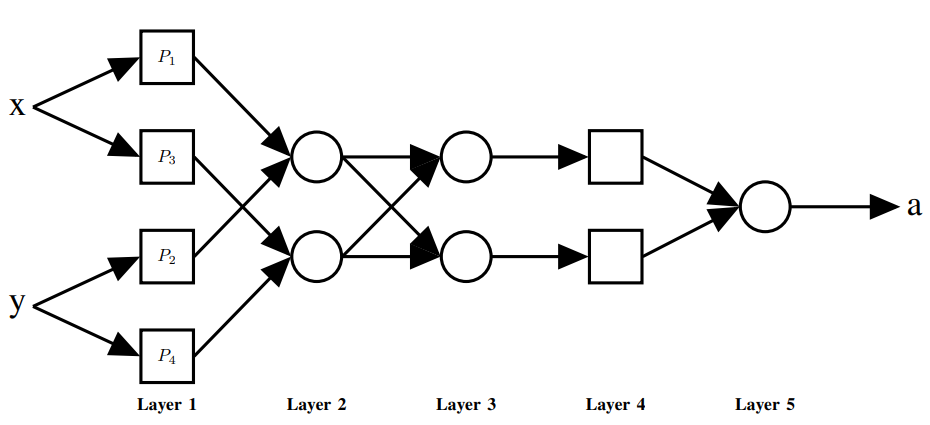 A Fuzzy Knowledge-based System for UV Exposure ManagementCharalampos S. Kouzinopoulos, Anastasia Kassiani Blitsi, Georgios Stavropoulos, and 2 more authorsIn 2022 IEEE 8th World Forum on Internet of Things (WF-IoT), 2022
A Fuzzy Knowledge-based System for UV Exposure ManagementCharalampos S. Kouzinopoulos, Anastasia Kassiani Blitsi, Georgios Stavropoulos, and 2 more authorsIn 2022 IEEE 8th World Forum on Internet of Things (WF-IoT), 2022Ultraviolet (UV) radiation is part of the optical spectrum of the solar light. Exposure to ultraviolet radiation for prolonged periods of time can cause damage to skin cells and lead to the development of both non-melanoma cancer and melanomas. Workers in constructions sites are particularly susceptible to exposure in UV radiation due to the prolonged periods of staying in outdoors areas that offer no protection from the sun rays. This paper presents a fuzzy logic system that monitors the UV levels at particular construction sites, the environmental conditions that can affect UV as well as the location of workers and can provide notifications and alerts to both the workers and health and safety managers at each site.
@inproceedings{Kouzinopoulos2022AFuzzy, author = {Kouzinopoulos, Charalampos S. and Blitsi, Anastasia Kassiani and Stavropoulos, Georgios and Votis, Konstantinos and Tzovaras, Dimitrios}, booktitle = {2022 IEEE 8th World Forum on Internet of Things (WF-IoT)}, title = {A Fuzzy Knowledge-based System for UV Exposure Management}, year = {2022}, volume = {}, number = {}, pages = {1-6}, keywords = {Fuzzy logic;Adaptive systems;Malignant tumors;Knowledge based systems;Skin;Health and safety;Internet of Things;Adaptive expert systems;UV exposure;Fuzzy multi-criteria analysis;IoT;Data analysis}, doi = {10.1109/WF-IoT54382.2022.10152116}, } -
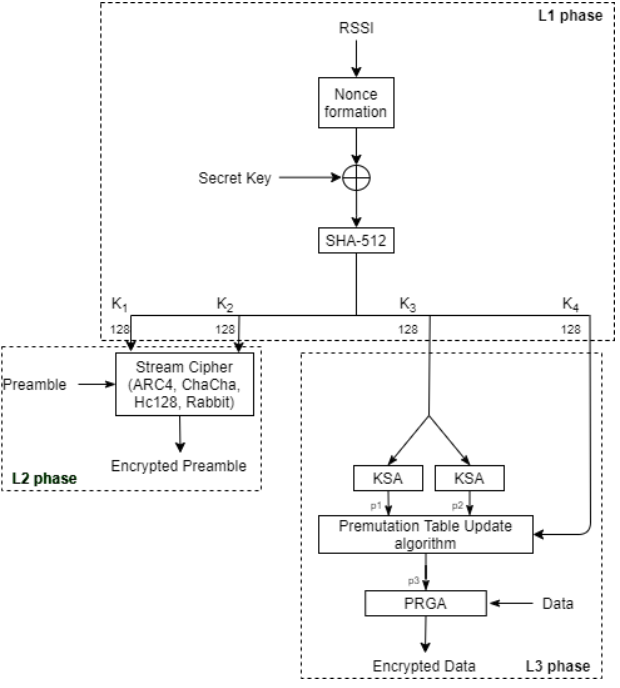 An Encryption Scheme using Dynamic Keys and Stream Ciphers for Embedded DevicesChrysoula Oikonomou, Charalampos S Kouzinopoulos, Dimosthenis Ioannidis, and 1 more authorIn 2022 11th Mediterranean Conference on Embedded Computing (MECO), 2022
An Encryption Scheme using Dynamic Keys and Stream Ciphers for Embedded DevicesChrysoula Oikonomou, Charalampos S Kouzinopoulos, Dimosthenis Ioannidis, and 1 more authorIn 2022 11th Mediterranean Conference on Embedded Computing (MECO), 2022Security in embedded devices can be challenging, due to limited available resources, including processing power, memory and energy autonomy. Embedded security solutions should have a low computational complexity and minimum memory requirements, while at the same time these must not reflect in the mechanism’s efficiency. This paper describes a lightweight scheme for Data in Transit Encryption (DiTE) using dynamic keys, designed for embedded devices. The scheme is based on the RC4 and ChaCha ciphers and uses communication channel characteristics, and especially the RSSi, to generate the encryption keys. The proposed algorithm provides an enhanced security level, due to the non static encryption keys, in both physical and transport level.
@inproceedings{Oikonomou2022AnEncryption, author = {Oikonomou, Chrysoula and Kouzinopoulos, Charalampos S and Ioannidis, Dimosthenis and Tzovaras, Dimitrios}, booktitle = {2022 11th Mediterranean Conference on Embedded Computing (MECO)}, title = {An Encryption Scheme using Dynamic Keys and Stream Ciphers for Embedded Devices}, year = {2022}, volume = {}, number = {}, pages = {1-4}, keywords = {Ciphers;Embedded computing;Heuristic algorithms;Memory management;Communication channels;Encryption;Security;cybersecurity;encryption;embedded;lightweight;dynamic key}, doi = {10.1109/MECO55406.2022.9797120}, }
2021
-
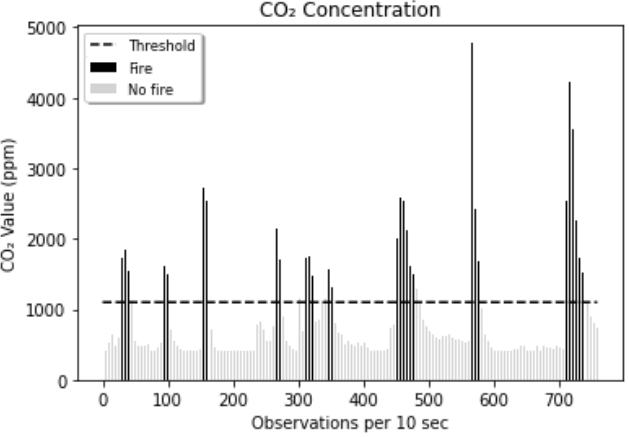 A low-power embedded system for fire monitoring and detection using a multilayer perceptronAlexios Papaioannou, Panagiotis Verikios, Charalampos S Kouzinopoulos, and 2 more authorsIn 2021 IEEE Sensors Applications Symposium (SAS), 2021
A low-power embedded system for fire monitoring and detection using a multilayer perceptronAlexios Papaioannou, Panagiotis Verikios, Charalampos S Kouzinopoulos, and 2 more authorsIn 2021 IEEE Sensors Applications Symposium (SAS), 2021Fire monitoring and detection systems can evaluate data from environmental or image sensors in order to predict occurrences of fire. It is a complex procedure that requires a significant amount of energy as input data is usually acquired from multiple sensors and the algorithms generally have an increased complexity. This paper introduces a low-power fire monitoring and detection system that utilizes data from two environmental sensors. As a predictive algorithm for fire occurrences, it uses a multilayer perceptron (MLP) with a combination of different optimizations, developing a model with low memory requirements and high -accuracy predictions. The accuracy of the proposed system was verified using a dataset created by the environmental sensors for fire incidents and its performance was compared to existing approaches. An evaluation of the proposed system’s power consumption and memory requirements is also presented.
@inproceedings{Papaioannou2021ALow, author = {Papaioannou, Alexios and Verikios, Panagiotis and Kouzinopoulos, Charalampos S and Ioannidis, Dimosthenis and Tzovaras, Dimitrios}, booktitle = {2021 IEEE Sensors Applications Symposium (SAS)}, title = {A low-power embedded system for fire monitoring and detection using a multilayer perceptron}, year = {2021}, volume = {}, number = {}, pages = {1-6}, keywords = {Image sensors;Power demand;Machine learning algorithms;Memory management;Machine learning;Predictive models;Multilayer perceptrons;Fire detection and monitoring;Embedded systems;Low-power;MLP}, doi = {10.1109/SAS51076.2021.9530090}, }
2020
-
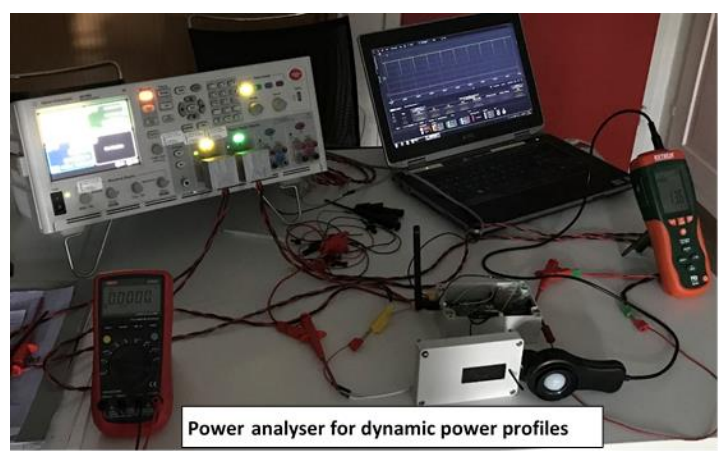 Low Light Energy Autonomous LoRaWAN NodeMarcel Meli, Manuel Brütsch, Stefan Stajic, and 5 more authorsIn 2020 IEEE 5th International Symposium on Smart and Wireless Systems within the Conferences on Intelligent Data Acquisition and Advanced Computing Systems (IDAACS-SWS), 2020
Low Light Energy Autonomous LoRaWAN NodeMarcel Meli, Manuel Brütsch, Stefan Stajic, and 5 more authorsIn 2020 IEEE 5th International Symposium on Smart and Wireless Systems within the Conferences on Intelligent Data Acquisition and Advanced Computing Systems (IDAACS-SWS), 2020A LoRaWAN node powered using an 8 cm2 solar cell was designed and its low light harvesting performance evaluated. The embedded system is used to sense some parameters and transmit the results every 10 minutes, using the spreading factor SF7BW125 and transmitting with + 8 dBm, which allows the coverage of a small building. The node can cold start with less than 30 lux. Once started, its operations can be sustained down to 20 lux. Operation at higher spreading factors or higher RF output power is also possible if the transmission interval is increased. Such a performance enables the use of energy autonomous LPWAN nodes in poorly lit environments. The small size of the solar cell makes it possible to build small nodes.
@inproceedings{Meli2020LowLight, author = {Meli, Marcel and Brütsch, Manuel and Stajic, Stefan and Böbel, Manuel and Lorenz, David and Hegetschweiler, Lukas and Karanassos, Dimitris and Kouzinopoulos, Charalampos}, booktitle = {2020 IEEE 5th International Symposium on Smart and Wireless Systems within the Conferences on Intelligent Data Acquisition and Advanced Computing Systems (IDAACS-SWS)}, title = {Low Light Energy Autonomous LoRaWAN Node}, year = {2020}, volume = {}, number = {}, pages = {1-6}, keywords = {Photovoltaic cells;Supercapacitors;Random access memory;Temperature measurement;Power system management;Nonvolatile memory;Ferroelectric films;energy harvesting;solar cells;LPWAN;LoRaWAN;power management}, doi = {10.1109/IDAACS-SWS50031.2020.9297089}, }
2019
-
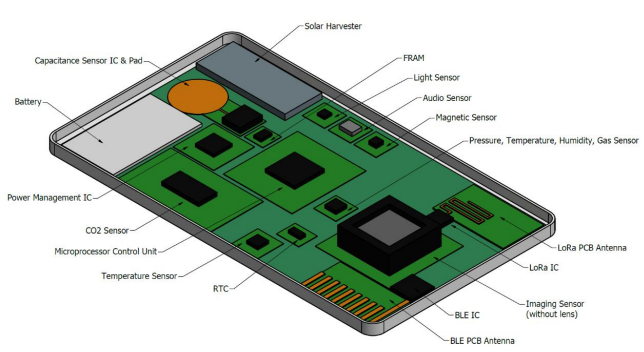 AMANDA: An Autonomous Self-Powered Miniaturized Smart Sensing Embedded SystemCharalampos S. Kouzinopoulos, Dimitrios Tzovaras, Pawel Bembnowicz, and 7 more authorsIn 2019 IEEE 9th International Conference on Consumer Electronics (ICCE-Berlin), 2019
AMANDA: An Autonomous Self-Powered Miniaturized Smart Sensing Embedded SystemCharalampos S. Kouzinopoulos, Dimitrios Tzovaras, Pawel Bembnowicz, and 7 more authorsIn 2019 IEEE 9th International Conference on Consumer Electronics (ICCE-Berlin), 2019This paper introduces an Autonomous Smart Sensing Card (ASSC), an embedded system that will be powered indoors and outdoors by harvested energy, have miniaturized dimensions and serve multi-sensorial IoT applications for smart living and working environments. It will consist of a combination of newly developed and optimized off-the-shelf or close-to-commercialization technologies such as PV harvesters, energy storage and power management units, MCUs and sensors, all packed with a form factor under 3mm in thickness. The system will introduce technical breakthroughs that will boost further miniaturization, a small footprint, ultra-low power consumption as well as short- and long-range communications.
@inproceedings{Kouzinopoulos2019AMANDA, author = {Kouzinopoulos, Charalampos S. and Tzovaras, Dimitrios and Bembnowicz, Pawel and Meli, Marcel and Bellanger, Mathieu and Kauer, Matthias and De Vos, Julien and Pasero, Denis and Schellenberg, Martin and Vujicic, Oskar}, booktitle = {2019 IEEE 9th International Conference on Consumer Electronics (ICCE-Berlin)}, title = {AMANDA: An Autonomous Self-Powered Miniaturized Smart Sensing Embedded System}, year = {2019}, volume = {}, number = {}, pages = {324-329}, keywords = {Electronic smart systems;Embedded systems;Sensors;Microelectronics;Miniaturization;Autonomous operation;Energy harvesting}, doi = {10.1109/ICCE-Berlin47944.2019.8966223}, }
2018
-
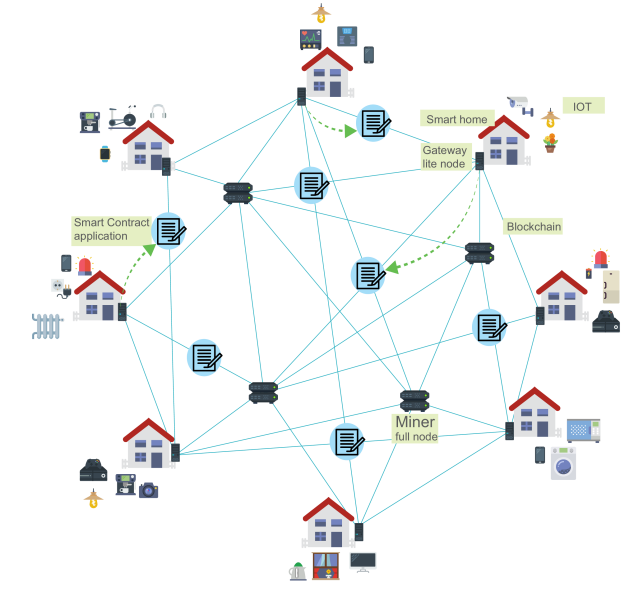 Implementing a Forms of Consent Smart Contract on an IoT-based Blockchain to promote user trustCharalampos S. Kouzinopoulos, Konstantinos M. Giannoutakis, Konstantinos Votis, and 7 more authorsIn 2018 Innovations in Intelligent Systems and Applications (INISTA), 2018
Implementing a Forms of Consent Smart Contract on an IoT-based Blockchain to promote user trustCharalampos S. Kouzinopoulos, Konstantinos M. Giannoutakis, Konstantinos Votis, and 7 more authorsIn 2018 Innovations in Intelligent Systems and Applications (INISTA), 2018The H2020 European research project Safe-Guarding Home IoT Environments with Personalised Real-time Risk Control (GHOST) aims to develop a cyber-security layer on IoT smart home installations. The proposed system analyses packet-level data flows for building patterns of communications between IoT devices and external entities. To ensure non-repudiation, integrity and authentication of the data captured, they are stored in a Blockchain, a distributed ledger network, as digitally-signed transactions. Since the data can potentially include sensitive user information, it is imperative to promote trust by informing users about the operating principles of the network as well as to request the acceptance of a consent form by them. This paper presents the design and implementation of a Forms of Consent application, a Distributed Application that interacts with a set of Smart Contracts deployed on a private Ethereum network. The application is being developed as part of the GHOST project.
@inproceedings{8466268, author = {Kouzinopoulos, Charalampos S. and M. Giannoutakis, Konstantinos and Votis, Konstantinos and Tzovaras, Dimitrios and Collen, Anastasija and Nijdam, Niels A. and Konstantas, Dimitri and Spathoulas, Georgios and Pandey, Pankaj and Katsikas, Sokratis}, booktitle = {2018 Innovations in Intelligent Systems and Applications (INISTA)}, title = {Implementing a Forms of Consent Smart Contract on an IoT-based Blockchain to promote user trust}, year = {2018}, volume = {}, number = {}, pages = {1-6}, keywords = {Smart homes;Contracts;Privacy;Protocols;blockchain;ethereum;smart contracts;cyber security;user trust}, doi = {10.1109/INISTA.2018.8466268}, }
2015
-
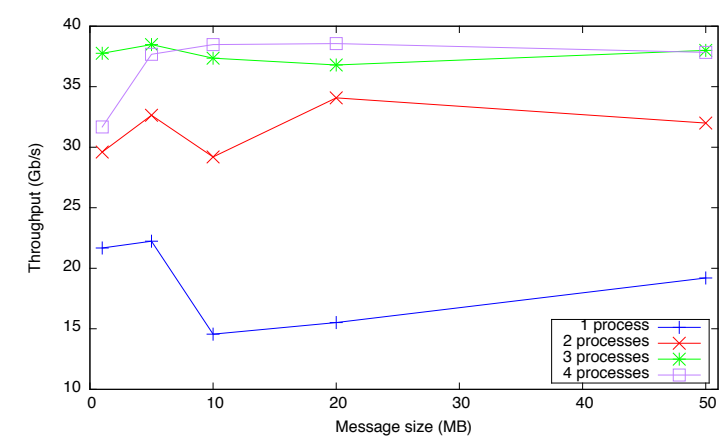 ALFA: The new ALICE-FAIR software frameworkM Al-Turany, P Buncic, P Hristov, and 8 more authorsIn Journal of Physics: Conference Series, 2015
ALFA: The new ALICE-FAIR software frameworkM Al-Turany, P Buncic, P Hristov, and 8 more authorsIn Journal of Physics: Conference Series, 2015The commonalities between the ALICE and FAIR experiments and their computing requirements led to the development of large parts of a common software framework in an experiment independent way. The FairRoot project has already shown the feasibility of such an approach for the FAIR experiments and extending it beyond FAIR to experiments at other facilities[1, 2]. The ALFA framework is a joint development between ALICE Online- Offline (O2) and FairRoot teams. ALFA is designed as a flexible, elastic system, which balances reliability and ease of development with performance using multi-processing and multithreading. A message- based approach has been adopted; such an approach will support the use of the software on different hardware platforms, including heterogeneous systems. Each process in ALFA assumes limited communication and reliance on other processes. Such a design will add horizontal scaling (multiple processes) to vertical scaling provided by multiple threads to meet computing and throughput demands. ALFA does not dictate any application protocols. Potentially, any content-based processor or any source can change the application protocol. The framework supports different serialization standards for data exchange between different hardware and software languages.
@inproceedings{al2015alfa, title = {ALFA: The new ALICE-FAIR software framework}, author = {Al-Turany, M and Buncic, P and Hristov, P and Kollegger, T and Kouzinopoulos, C and Lebedev, A and Lindenstruth, V and Manafov, A and Richter, M and Rybalchenko, A and others}, booktitle = {Journal of Physics: Conference Series}, volume = {664}, number = {7}, pages = {072001}, year = {2015}, organization = {IOP Publishing}, doi = {10.1088/1742-6596/664/7/072001}, }
2013
-
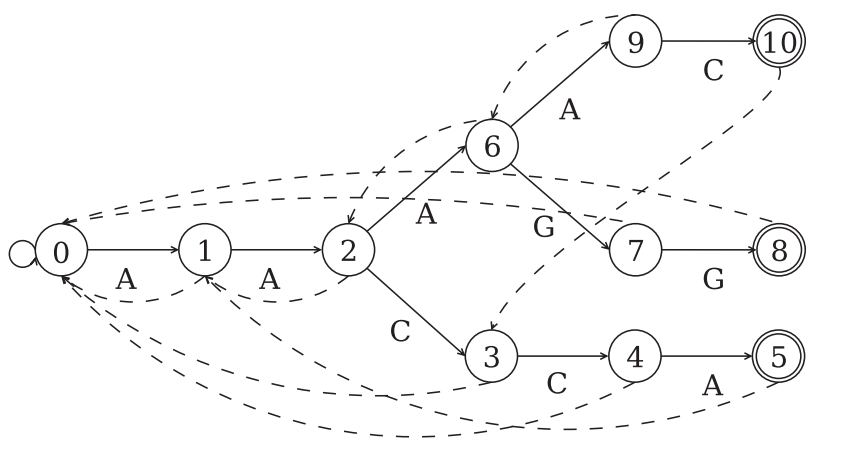 Exact online two-dimensional pattern matching using multiple pattern matching algorithmsCharalampos S Kouzinopoulos and Konstantinos G MargaritisJournal of Experimental Algorithmics (JEA), 2013
Exact online two-dimensional pattern matching using multiple pattern matching algorithmsCharalampos S Kouzinopoulos and Konstantinos G MargaritisJournal of Experimental Algorithmics (JEA), 2013Baker and Bird and Baeza-Yates and Regnier are two of the most efficient and widely used algorithms for exact online two-dimensional pattern matching. Both use the automaton of the Aho-Corasick multiple pattern matching algorithm to locate all the occurrences of a two-dimensional pattern in a two-dimensional input string, a data structure that is considered by many as inefficient, especially when used to process long patterns or data using large alphabet sizes. This article presents variants of the Baker and Bird and the Baeza-Yates and Regnier algorithms that use the data structures of the Set Horspool, Wu-Manber, Set Backward Oracle Matching, and SOG multiple pattern matching algorithms in place of the automaton of Aho-Corasick and evaluates their performance experimentally in terms of preprocessing and searching time.
@article{kouzinopoulos2013exact, title = {Exact online two-dimensional pattern matching using multiple pattern matching algorithms}, author = {Kouzinopoulos, Charalampos S and Margaritis, Konstantinos G}, journal = {Journal of Experimental Algorithmics (JEA)}, volume = {18}, year = {2013}, doi = {10.1145/2513148}, publisher = {ACM New York, NY, USA} }
2009
-
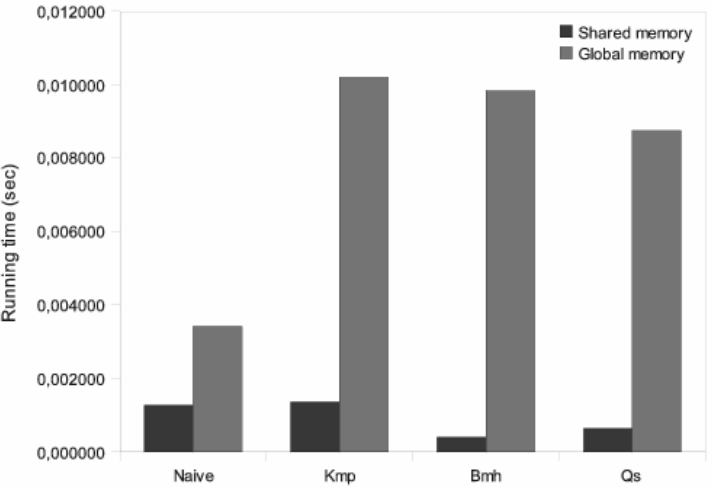 String matching on a multicore GPU using CUDACharalampos S Kouzinopoulos and Konstantinos G MargaritisIn 2009 13th Panhellenic Conference on Informatics, 2009
String matching on a multicore GPU using CUDACharalampos S Kouzinopoulos and Konstantinos G MargaritisIn 2009 13th Panhellenic Conference on Informatics, 2009Graphics processing units (GPUs) have evolved over the past few years from dedicated graphics rendering devices to powerful parallel processors, outperforming traditional central processing units (CPUs) in many areas of scientific computing. The use of GPUs as processing elements was very limited until recently, when the concept of general-purpose computing on graphics processing units (GPGPU) was introduced. GPGPU made possible to exploit the processing power and the memory bandwidth of the GPUs with the use of APIs that hide the GPU hardware from programmers. This paper presents experimental results on the parallel processing for some well known on-line string matching algorithms using one such GPU abstraction API, the Compute Unified Device Architecture (CUDA).
@inproceedings{kouzinopoulos2009string, title = {String matching on a multicore GPU using CUDA}, author = {Kouzinopoulos, Charalampos S and Margaritis, Konstantinos G}, booktitle = {2009 13th Panhellenic Conference on Informatics}, pages = {14--18}, year = {2009}, doi = {10.1109/PCI.2009.47}, organization = {IEEE} }